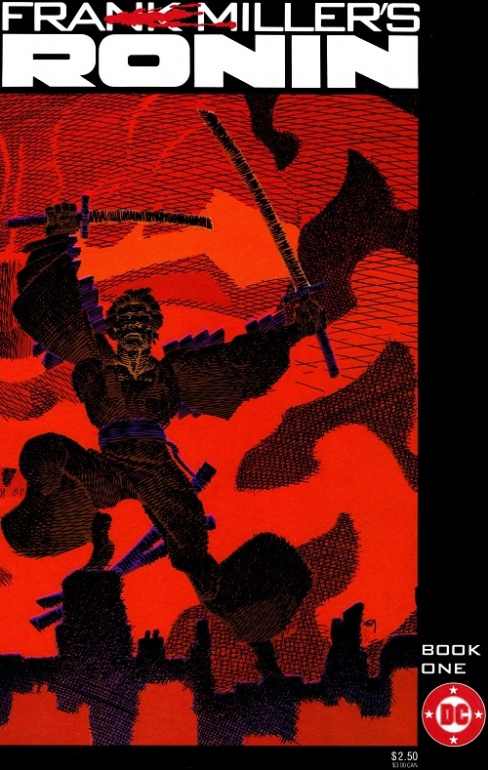Multiversity’s history column returns with yet another installment in our series of year-by-year recaps of comic industry history. This week we’ll be looking at 1983. If you want a refresher before diving in, might I suggest you review 1980, 1981, and 1982? And check back in a month for the unbelievable antics of 1993, the summer of the glut!
In 1983, there were around 3,000 comic specialty shops in the US, and business was booming. Sales through these shops were up 32% year over year. Part of that boost came from cannibalizing newsstand sales. Comics were being shipped to newsstand distributors about three weeks before their street dates to allow time for processing and delivery. Retailers operating in the direct market ignored the delay, offer new issues to readers long before their local competitors.
Realizing fans, not casual readers, were their new primary market, publishers made been making changes in their output to cater to them. In 1982, that meant improving paper quality on special projects. Unfortunately, the change to heavier paperstock exposed a liability in another part of the production process. Publishers were used to printing 60 lines per inch and letting the natural bleeding of ink on newsprint fill in the gaps, but 60 lpi looked terrible on Baxter paper, which had much better color hold. (See the interior below from “Camelot 3000” as an example. The skin tones are splotchy, and you can see the bands in the mace where the blue percentages changed.) To fix this, in 1983 publishers increased their reproduction to 120 lpi. Implementing this change was just one more expense that had to be passed on to readers of the special projects, raising cover prices and further alienating casual readers.

1983 marked the end of an error for the fan press. The adzine “Rocket’s Blast Comicollector,” which had been published regularly since 1961, ended at issue #153. The “Comics Buyer’s Guide,” another long-running adzine which had been bought from founder Alan Light by Krause Publications in December 1982, saw changes in format that moved it toward more editorial content. New editors Don and Maggie Thompson added a letter column that kept subscribers engaged by letting them communicate and argue with each other. Krause also paid for ad space in Marvel and other comics to run ballots for their first fan awards. The inaugural winners were announced in issue #500, dated June 17.
Carol Kalish, former fanzine runner and current Marvel Sales Manager, knew how badly fans wanted information about creators and upcoming projects. She wanted to start an in-house promotional magazine for fans and put her assistant, Peter David, in charge of it. He chose the name “Marvel Age,” a term that had been used by Marvel fans to describe the company’s rise to dominance in the late 1960s. (It was also a private joke, as he had published a fanzine called “Second Age” before getting hired at Marvel.) The first issue, which was only 16 pages, was released with an April 1983 cover date. The series was popular enough to run monthly until 1994.
Marvel released the first comic encyclopedia, “The Official Handbook of the Marvel Universe,” with a cover date of January 1983. This series was aimed directly at fans with a promise to summarize continuity and establish character ratings in certain categories. It’s popularity prompted DC to follow suit a couple years later with their “Who’s Who” maxiseries and annual updates.

DC had a few other highlights in 1983. They participated in Ronald Reagan’s Drug Awareness Campaign with three “Teen Titans” specials. Each one included an introduction by First Lady Nancy Reagan. In April, they released “Omega Men” #3, followed by #4 the very next week because the series had fallen behind schedule. The cover dates were not adjusted to reflect the double-shipping. On June 17, Superman III hit theaters with Christopher Reeve and Richard Pryor, disappointing almost everyone who enjoyed the first two. In November, DC repurposed “Star Raiders,” a story meant for serialization in an Atari magazine, as their first graphic novel. They also signed a deal with Kenner granting the toy company an exclusive license for DC action figures.
In response to that last point, rival toy company Mattel pursued Marvel for a similar deal. As part of the final agreement, Mattel required Marvel to put all the characters used in the toy line into one comic book. Mattel’s marketing research had found that kids responded well to the words secret and war, so they recommended those be included in the title. The result was 1984’s “Marvel Super-Heroes Secret Wars.”
The boom in comic specialty shops increased demand for new comics, and several new publishers rose to the occasion. First Comics, Americomics, Eagle Comics, and Capital were all founded in 1983, and Kitchen Sink, formerly an Underground Comix publisher, entered the direct market with some more mainstream material. Archie revived its Red Circle superheroes in direct market-exclusive editions that didn’t carry the CCA seal. Eagle Comics brought “Judge Dredd” to the US for the first time in November. Eclipse continued to grow in 1983 and reached 8 new comics a month. WaRP, a long-established name, saw its “ElfQuest” trade paperbacks reach new levels of popularity when the title became the sixth best-selling book at Waldenbooks.
It wasn’t all good news for small publishers, though. Fans were caught off guard when Warren Publishing, known for its horror material, suddenly closed in February 1983. The contents of its offices and some of its intellectual properties were purchased by Harris Publications in August, but would sit idle until Harris dipped its toe into comic waters with “Vampirella” #113 in 1988.






